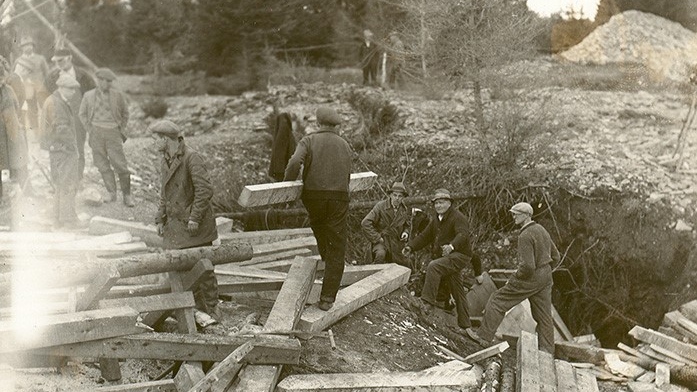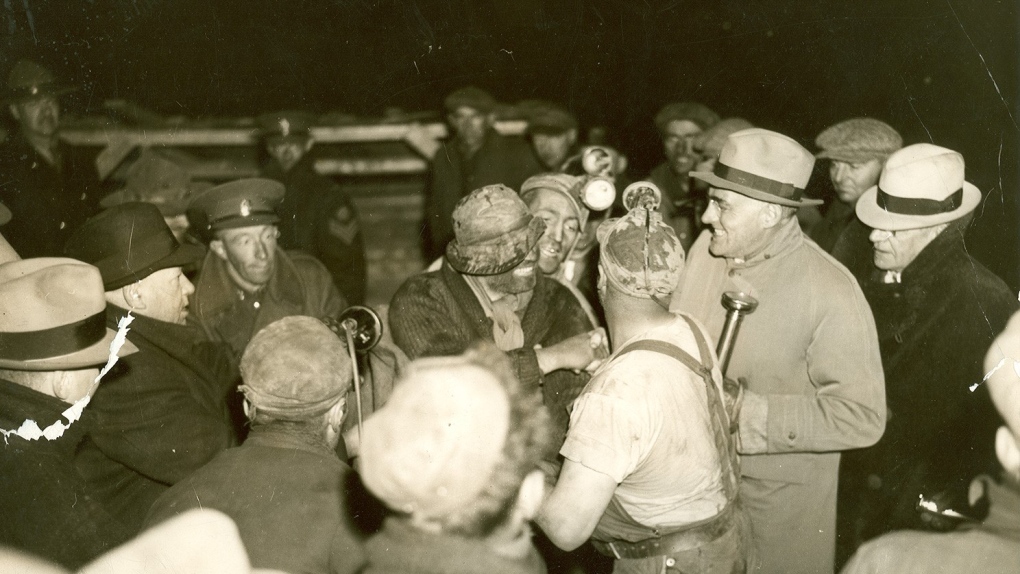'History was made here': Remembering the Moose River Gold Mine rescue in Nova Scotia
It's been nearly 90 years since three men were rescued from a gold mine in Nova Scotia.
On April 12, 1936, mine owners, Dr. David Robertson and Herman Magill, along with timekeeper, Alfred Scadding, were trapped 141 feet underground after supports gave way causing a roof collapse in the Moose River gold mine.
"They were trapped there for 10 days. The rescue effort that took place was huge. Miners came from all over the country to try and rescue these men," said Betty Belmore with the Moose River Gold Mine Museum Society.
The Salvation Army said its Emergency Disaster Services team was on scene during the rescue efforts to serve food and hot beverages, and to provide supports to rescuers, community members, and the loved ones of those trapped.
"This is a remote area of Nova Scotia that has no cell service, has no good communication. It would have been a dirt road in the 1930s. We still came. We're still here. We're still connected to the community," said John Bignell, with the Salvation Army's Emergency Disaster Services.
After six days of rescue efforts, there were no signs of survivors. Just when officials were about to abandon their work, they were finally about to make contact with the three men.
 Men putting new timber for supports through the new shaft of the Moose River Gold Mine to help men trapped below. (Nova Scotia Archives / Allen Fraser)
Men putting new timber for supports through the new shaft of the Moose River Gold Mine to help men trapped below. (Nova Scotia Archives / Allen Fraser)
"There were lots of people who had given up, but there were still many who did not give up on the idea that there were people down there still living," said Belmore.
Magill died hours later of pneumonia.
It was another four days before Robertson and Scadding were brought to the surface.
"Underground mining did not happen here again. Life went from being a bustling community to just gradual disappearance of people moving away," said Belmore.
The Salvation Army said the rescue efforts were broadcast to more than 650 radio stations throughout North America, and were even picked up by the BBC and broadcast across Europe.
"History was made in this community. The first live broadcast around the world. That's something to be proud of," said resident and museum board member Stephen Paugh.
 Dr. David Robertson and group after he was rescued from the Moose River Gold Mine. (Nova Scotia Archives / Evening Telegram Toronto)
Dr. David Robertson and group after he was rescued from the Moose River Gold Mine. (Nova Scotia Archives / Evening Telegram Toronto)
The 88th anniversary of the rescue was marked Saturday at the Moose River Gold Mines Museum. The event was held by the Moose River Gold Mine Society, the Salvation Army, and the Halifax Amateur Radio Club.
"Amateur radio was one of the first means of communication to get news out to the real world," said Earl Burneau with the Halifax Amateur Radio Club.
"Back then it was all Morse code, now it's all digital."
Despite the rainy and windy conditions Saturday, there was a good turnout for the event, with many people stopping by to remember the historic day.
"I can remember as a kid some of the older people in the community. I remember them, and they were involved in the rescue," said Paugh.
"My bus driver was a draegerman here, and some relatives had worked in the mine.
For more Nova Scotia news visit our dedicated provincial page.
CTVNews.ca Top Stories

What is flagpoling? A new ban on the practice is starting to take effect
Immigration measures announced as part of Canada's border response to president-elect Donald Trump's 25 per cent tariff threat are starting to be implemented, beginning with a ban on what's known as 'flagpoling.'
Hong Kong police issue arrest warrants and bounties for six activists including two Canadians
Hong Kong police on Tuesday announced a fresh round of arrest warrants for six activists based overseas, with bounties set at $1 million Hong Kong dollars for information leading to their arrests.
Indigenous family faced discrimination in North Bay, Ont., when they were kicked off transit bus
Ontario's Human Rights Tribunal has awarded members of an Indigenous family in North Bay $15,000 each after it ruled they were victims of discrimination.
Heavy travel day starts with brief grounding of all American Airlines flights
American Airlines briefly grounded flights nationwide Tuesday because of a technical problem just as the Christmas travel season kicked into overdrive and winter weather threatened more potential problems for those planning to fly or drive.
OPP and Ottawa firefighters help remove vehicle wedged into Highway 417 overpass
Ottawa firefighters and local Ontario Provincial Police officers were called to a bizarre scene Tuesday morning along Highway 417, where a driver managed to wedge his vehicle under an overpass.
On Christmas Eve, Pope Francis appeals for courage to better the world
Pope Francis said the story of Jesus' birth as a poor carpenter's son should instill hope that all people can make an impact on the world, as the pontiff on Tuesday led the world's Roman Catholics into Christmas.
Read Trudeau's Christmas message
Prime Minister Justin Trudeau issued his Christmas message on Tuesday. Here is his message in full.
Ontario First Nation challenging selection of underground nuclear waste site in court
A First Nation in northern Ontario is challenging the selection of a nearby region as the site of a deep geological repository that will hold Canada's nuclear waste, arguing in a court filing that it should have had a say in the matter as the site falls "squarely" within its territory.
Dismiss Trump taunts, expert says after 'churlish' social media posts about Canada
U.S. president-elect Donald Trump and those in his corner continue to send out strong messages about Canada.


































